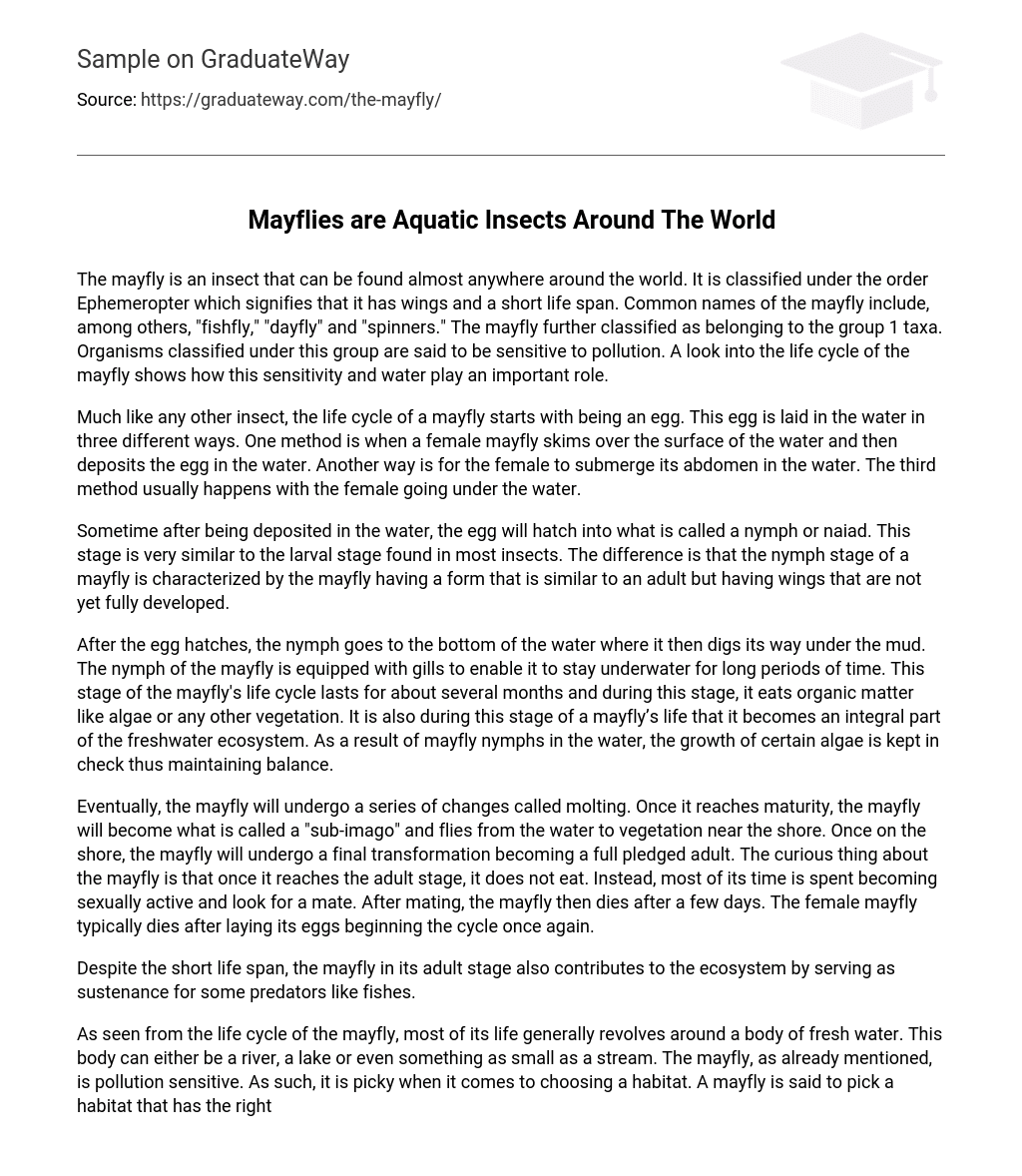The mayfly is an insect that can be found almost anywhere around the world. It is classified under the order Ephemeropter which signifies that it has wings and a short life span. Common names of the mayfly include, among others, “fishfly,” “dayfly” and “spinners.” The mayfly further classified as belonging to the group 1 taxa. Organisms classified under this group are said to be sensitive to pollution. A look into the life cycle of the mayfly shows how this sensitivity and water play an important role.
Much like any other insect, the life cycle of a mayfly starts with being an egg. This egg is laid in the water in three different ways. One method is when a female mayfly skims over the surface of the water and then deposits the egg in the water. Another way is for the female to submerge its abdomen in the water. The third method usually happens with the female going under the water.
Sometime after being deposited in the water, the egg will hatch into what is called a nymph or naiad. This stage is very similar to the larval stage found in most insects. The difference is that the nymph stage of a mayfly is characterized by the mayfly having a form that is similar to an adult but having wings that are not yet fully developed.
After the egg hatches, the nymph goes to the bottom of the water where it then digs its way under the mud. The nymph of the mayfly is equipped with gills to enable it to stay underwater for long periods of time. This stage of the mayfly’s life cycle lasts for about several months and during this stage, it eats organic matter like algae or any other vegetation. It is also during this stage of a mayfly’s life that it becomes an integral part of the freshwater ecosystem. As a result of mayfly nymphs in the water, the growth of certain algae is kept in check thus maintaining balance.
Eventually, the mayfly will undergo a series of changes called molting. Once it reaches maturity, the mayfly will become what is called a “sub-imago” and flies from the water to vegetation near the shore. Once on the shore, the mayfly will undergo a final transformation becoming a full pledged adult. The curious thing about the mayfly is that once it reaches the adult stage, it does not eat. Instead, most of its time is spent becoming sexually active and look for a mate. After mating, the mayfly then dies after a few days. The female mayfly typically dies after laying its eggs beginning the cycle once again.
Despite the short life span, the mayfly in its adult stage also contributes to the ecosystem by serving as sustenance for some predators like fishes.
As seen from the life cycle of the mayfly, most of its life generally revolves around a body of fresh water. This body can either be a river, a lake or even something as small as a stream. The mayfly, as already mentioned, is pollution sensitive. As such, it is picky when it comes to choosing a habitat. A mayfly is said to pick a habitat that has the right temperature and even the correct chemical composition. It also prefers fresh and clean water which contains a good amount of oxygen.
At certain times of the year, an increase in the number of adult mayflies occurs which has led some people to view them as pests. However, the mayfly is a very harmless insect. If a particularly large group of mayflies is present at a certain body of water, rest assured that there is a big chance that it is clean water. When water pollution however does occur, the population of the mayfly drops accordingly.
Water is truly a very important part in the life cycle of a mayfly. While they may be small, they still are part of a larger ecosystem. It is but proper for us to make sure that they are not made extinct. While pollution is the main enemy of the mayfly, there are other things that can hasten their demise. Thus we need to take better care of our environment especially when it comes to bodies of water.
References
Mayfly. Discover Entomology. 7 May 2008 <http://insects.tamu.edu/fieldguide/aimg3.html>





